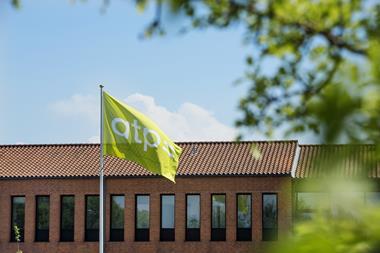The Danish pension fund for architects AP saw its solvency ratio fall by a third in the first half of 2018 as providers of average-rate pensions in Denmark made accounting adjustments in the wake of a regulatory change.
Earlier this year, the revised calculation of the Danish Volatility Adjustment (VA) – published by the European Insurance and Occupational Pensions Authority (EIOPA) in 2018 – finally came into force.
The change had the effect of lowering the discount yield curve used by insurance and pension companies to calculate liabilities under the Solvency II framework.
AP’s solvency ratio dropped to 199% at the end of June, from 282% at the end of December, according to the interim report of its manager Sampension.
Meanwhile, the pension fund for agricultural academics and vets, PJD – also managed by Sampension – saw its solvency ratio fall to 265% from 283%. Sampension Liv’s coverage weakened to 317% from 444% over the same period, the firm reported.
Sampension said: “For the average-rate pensions segment, total reserves have been affected by interest rate declines and regulatory changes, with the so-called VA surcharge falling over the year due to a new method of calculation by the authorities.”
Both of these elements affected free reserves and reduced the solvency coverage for Danish life insurance companies in general as well as those under Sampension, it said.
Meanwhile, pension fund PenSam, whose members are mostly public sector workers in the health, social care and education sectors, said in its first half report that its solvency capital requirement increased by DKK716m (€96m) during the period — partly due to the decrease in the VA.
“The decrease in the VA supplement has led to a large increase in life insurance provisions and thus a reduction in the collective bonus potential,” the fund said.
PenSam Liv’s solvency ratio fell to 502% at the end of June, from 732% at the end of December 2018.
The VA change has been seen as another factor driving Danish pension funds to move away from the provision of average-rate pensions, with or without yield guarantees attached, as it forces investment strategies to become more conservative thereby reducing potential returns.
AP and PJD are in the process of appealing a ruling impeding their attempt to switch their customers from average-rate to market-rate pension schemes.
The VA was also cited today by Denmark’s largest commercial pension fund PFA as having had a negative impact on its interim results, though not on the pensions side of its business.
It said a “considerable part of the adverse result on health and accident insurance” was due to an investment loss of DKK452m, of which “the majority” was related to the VA change.
PFA reported an overall group loss of DKK31m in the first half of 2019, after a DKK10m profit for the whole of 2018.








No comments yet